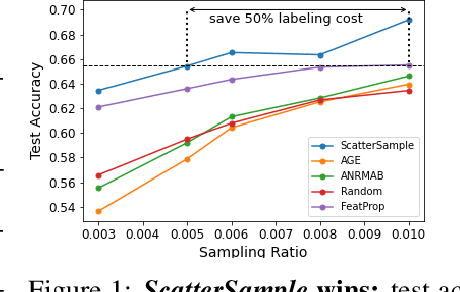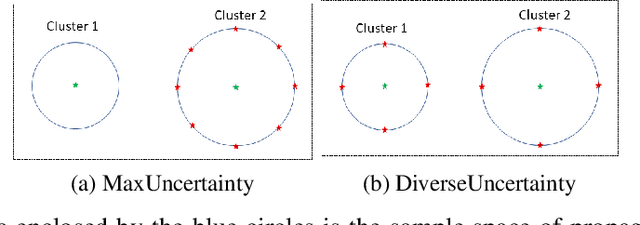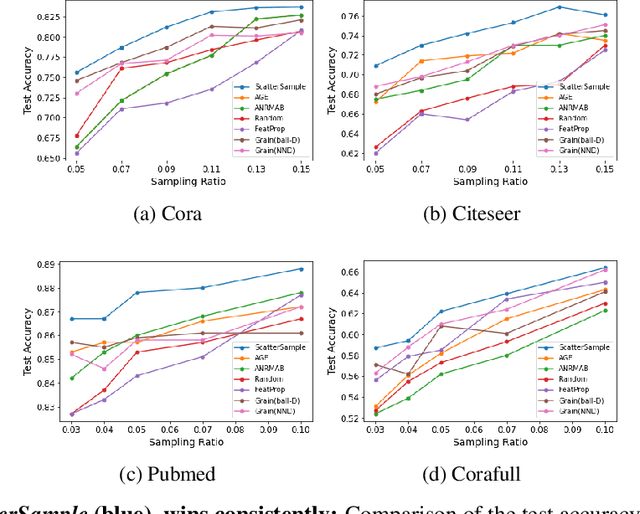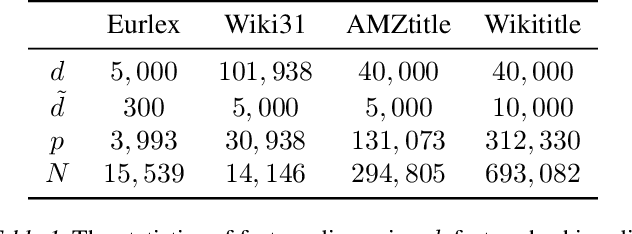Zhenwei Dai
TRAJECT-Bench:A Trajectory-Aware Benchmark for Evaluating Agentic Tool Use
Oct 06, 2025



Abstract:Large language model (LLM)-based agents increasingly rely on tool use to complete real-world tasks. While existing works evaluate the LLMs' tool use capability, they largely focus on the final answers yet overlook the detailed tool usage trajectory, i.e., whether tools are selected, parameterized, and ordered correctly. We introduce TRAJECT-Bench, a trajectory-aware benchmark to comprehensively evaluate LLMs' tool use capability through diverse tasks with fine-grained evaluation metrics. TRAJECT-Bench pairs high-fidelity, executable tools across practical domains with tasks grounded in production-style APIs, and synthesizes trajectories that vary in breadth (parallel calls) and depth (interdependent chains). Besides final accuracy, TRAJECT-Bench also reports trajectory-level diagnostics, including tool selection and argument correctness, and dependency/order satisfaction. Analyses reveal failure modes such as similar tool confusion and parameter-blind selection, and scaling behavior with tool diversity and trajectory length where the bottleneck of transiting from short to mid-length trajectories is revealed, offering actionable guidance for LLMs' tool use.
Bradley-Terry and Multi-Objective Reward Modeling Are Complementary
Jul 10, 2025Abstract:Reward models trained on human preference data have demonstrated strong effectiveness in aligning Large Language Models (LLMs) with human intent under the framework of Reinforcement Learning from Human Feedback (RLHF). However, RLHF remains vulnerable to reward hacking, where the policy exploits imperfections in the reward function rather than genuinely learning the intended behavior. Although significant efforts have been made to mitigate reward hacking, they predominantly focus on and evaluate in-distribution scenarios, where the training and testing data for the reward model share the same distribution. In this paper, we empirically show that state-of-the-art methods struggle in more challenging out-of-distribution (OOD) settings. We further demonstrate that incorporating fine-grained multi-attribute scores helps address this challenge. However, the limited availability of high-quality data often leads to weak performance of multi-objective reward functions, which can negatively impact overall performance and become the bottleneck. To address this issue, we propose a unified reward modeling framework that jointly trains Bradley--Terry (BT) single-objective and multi-objective regression-based reward functions using a shared embedding space. We theoretically establish a connection between the BT loss and the regression objective and highlight their complementary benefits. Specifically, the regression task enhances the single-objective reward function's ability to mitigate reward hacking in challenging OOD settings, while BT-based training improves the scoring capability of the multi-objective reward function, enabling a 7B model to outperform a 70B baseline. Extensive experimental results demonstrate that our framework significantly improves both the robustness and the scoring performance of reward models.
Cite Before You Speak: Enhancing Context-Response Grounding in E-commerce Conversational LLM-Agents
Mar 05, 2025Abstract:With the advancement of conversational large language models (LLMs), several LLM-based Conversational Shopping Agents (CSA) have been developed to help customers answer questions and smooth their shopping journey in e-commerce domain. The primary objective in building a trustworthy CSA is to ensure the agent's responses are accurate and factually grounded, which is essential for building customer trust and encouraging continuous engagement. However, two challenges remain. First, LLMs produce hallucinated or unsupported claims. Such inaccuracies risk spreading misinformation and diminishing customer trust. Second, without providing knowledge source attribution in CSA response, customers struggle to verify LLM-generated information. To address these challenges, we present an easily productionized solution that enables a "citation experience" utilizing In-context Learning (ICL) and Multi-UX-Inference (MUI) to generate responses with citations to attribute its original sources without interfering other existing UX features. With proper UX design, these citation marks can be linked to the related product information and display the source to our customers. In this work, we also build auto-metrics and scalable benchmarks to holistically evaluate LLM's grounding and attribution capabilities. Our experiments demonstrate that incorporating this citation generation paradigm can substantially enhance the grounding of LLM responses by 13.83% on the real-world data. As such, our solution not only addresses the immediate challenges of LLM grounding issues but also adds transparency to conversational AI.
How Far are LLMs from Real Search? A Comprehensive Study on Efficiency, Completeness, and Inherent Capabilities
Feb 26, 2025Abstract:Search plays a fundamental role in problem-solving across various domains, with most real-world decision-making problems being solvable through systematic search. Drawing inspiration from recent discussions on search and learning, we systematically explore the complementary relationship between search and Large Language Models (LLMs) from three perspectives. First, we analyze how learning can enhance search efficiency and propose Search via Learning (SeaL), a framework that leverages LLMs for effective and efficient search. Second, we further extend SeaL to SeaL-C to ensure rigorous completeness during search. Our evaluation across three real-world planning tasks demonstrates that SeaL achieves near-perfect accuracy while reducing search spaces by up to 99.1% compared to traditional approaches. Finally, we explore how far LLMs are from real search by investigating whether they can develop search capabilities independently. Our analysis reveals that while current LLMs struggle with efficient search in complex problems, incorporating systematic search strategies significantly enhances their problem-solving capabilities. These findings not only validate the effectiveness of our approach but also highlight the need for improving LLMs' search abilities for real-world applications.
A General Framework to Enhance Fine-tuning-based LLM Unlearning
Feb 25, 2025Abstract:Unlearning has been proposed to remove copyrighted and privacy-sensitive data from Large Language Models (LLMs). Existing approaches primarily rely on fine-tuning-based methods, which can be categorized into gradient ascent-based (GA-based) and suppression-based methods. However, they often degrade model utility (the ability to respond to normal prompts). In this work, we aim to develop a general framework that enhances the utility of fine-tuning-based unlearning methods. To achieve this goal, we first investigate the common property between GA-based and suppression-based methods. We unveil that GA-based methods unlearn by distinguishing the target data (i.e., the data to be removed) and suppressing related generations, which is essentially the same strategy employed by suppression-based methods. Inspired by this finding, we introduce Gated Representation UNlearning (GRUN) which has two components: a soft gate function for distinguishing target data and a suppression module using Representation Fine-tuning (ReFT) to adjust representations rather than model parameters. Experiments show that GRUN significantly improves the unlearning and utility. Meanwhile, it is general for fine-tuning-based methods, efficient and promising for sequential unlearning.
Stepwise Perplexity-Guided Refinement for Efficient Chain-of-Thought Reasoning in Large Language Models
Feb 18, 2025Abstract:Chain-of-Thought (CoT) reasoning, which breaks down complex tasks into intermediate reasoning steps, has significantly enhanced the performance of large language models (LLMs) on challenging tasks. However, the detailed reasoning process in CoT often incurs long generation times and high computational costs, partly due to the inclusion of unnecessary steps. To address this, we propose a method to identify critical reasoning steps using perplexity as a measure of their importance: a step is deemed critical if its removal causes a significant increase in perplexity. Our method enables models to focus solely on generating these critical steps. This can be achieved through two approaches: refining demonstration examples in few-shot CoT or fine-tuning the model using selected examples that include only critical steps. Comprehensive experiments validate the effectiveness of our method, which achieves a better balance between the reasoning accuracy and efficiency of CoT.
SimRAG: Self-Improving Retrieval-Augmented Generation for Adapting Large Language Models to Specialized Domains
Oct 23, 2024



Abstract:Retrieval-augmented generation (RAG) enhances the question-answering (QA) abilities of large language models (LLMs) by integrating external knowledge. However, adapting general-purpose RAG systems to specialized fields such as science and medicine poses unique challenges due to distribution shifts and limited access to domain-specific data. To tackle this, we propose SimRAG, a self-training approach that equips the LLM with joint capabilities of question answering and question generation for domain adaptation. Our method first fine-tunes the LLM on instruction-following, question-answering, and search-related data. Then, it prompts the same LLM to generate diverse domain-relevant questions from unlabeled corpora, with an additional filtering strategy to retain high-quality synthetic examples. By leveraging these synthetic examples, the LLM can improve their performance on domain-specific RAG tasks. Experiments on 11 datasets, spanning two backbone sizes and three domains, demonstrate that SimRAG outperforms baselines by 1.2\%--8.6\%.
Exploring Query Understanding for Amazon Product Search
Aug 05, 2024



Abstract:Online shopping platforms, such as Amazon, offer services to billions of people worldwide. Unlike web search or other search engines, product search engines have their unique characteristics, primarily featuring short queries which are mostly a combination of product attributes and structured product search space. The uniqueness of product search underscores the crucial importance of the query understanding component. However, there are limited studies focusing on exploring this impact within real-world product search engines. In this work, we aim to bridge this gap by conducting a comprehensive study and sharing our year-long journey investigating how the query understanding service impacts Amazon Product Search. Firstly, we explore how query understanding-based ranking features influence the ranking process. Next, we delve into how the query understanding system contributes to understanding the performance of a ranking model. Building on the insights gained from our study on the evaluation of the query understanding-based ranking model, we propose a query understanding-based multi-task learning framework for ranking. We present our studies and investigations using the real-world system on Amazon Search.
ScatterSample: Diversified Label Sampling for Data Efficient Graph Neural Network Learning
Jun 09, 2022



Abstract:What target labels are most effective for graph neural network (GNN) training? In some applications where GNNs excel-like drug design or fraud detection, labeling new instances is expensive. We develop a data-efficient active sampling framework, ScatterSample, to train GNNs under an active learning setting. ScatterSample employs a sampling module termed DiverseUncertainty to collect instances with large uncertainty from different regions of the sample space for labeling. To ensure diversification of the selected nodes, DiverseUncertainty clusters the high uncertainty nodes and selects the representative nodes from each cluster. Our ScatterSample algorithm is further supported by rigorous theoretical analysis demonstrating its advantage compared to standard active sampling methods that aim to simply maximize the uncertainty and not diversify the samples. In particular, we show that ScatterSample is able to efficiently reduce the model uncertainty over the whole sample space. Our experiments on five datasets show that ScatterSample significantly outperforms the other GNN active learning baselines, specifically it reduces the sampling cost by up to 50% while achieving the same test accuracy.
Federated Multiple Label Hashing (FedMLH): Communication Efficient Federated Learning on Extreme Classification Tasks
Oct 23, 2021



Abstract:Federated learning enables many local devices to train a deep learning model jointly without sharing the local data. Currently, most of federated training schemes learns a global model by averaging the parameters of local models. However, most of these training schemes suffer from high communication cost resulted from transmitting full local model parameters. Moreover, directly averaging model parameters leads to a significant performance degradation, due to the class-imbalanced non-iid data on different devices. Especially for the real life federated learning tasks involving extreme classification, (1) communication becomes the main bottleneck since the model size increases proportionally to the number of output classes; (2) extreme classification (such as user recommendation) normally have extremely imbalanced classes and heterogeneous data on different devices. To overcome this problem, we propose federated multiple label hashing (FedMLH), which leverages label hashing to simultaneously reduce the model size (up to 3.40X decrease) with communication cost (up to 18.75X decrease) and achieves significant better accuracy (up to 35.5%} relative accuracy improvement) and faster convergence rate (up to 5.5X increase) for free on the federated extreme classification tasks compared to federated average algorithm.
 Add to Chrome
Add to Chrome Add to Firefox
Add to Firefox Add to Edge
Add to Edge